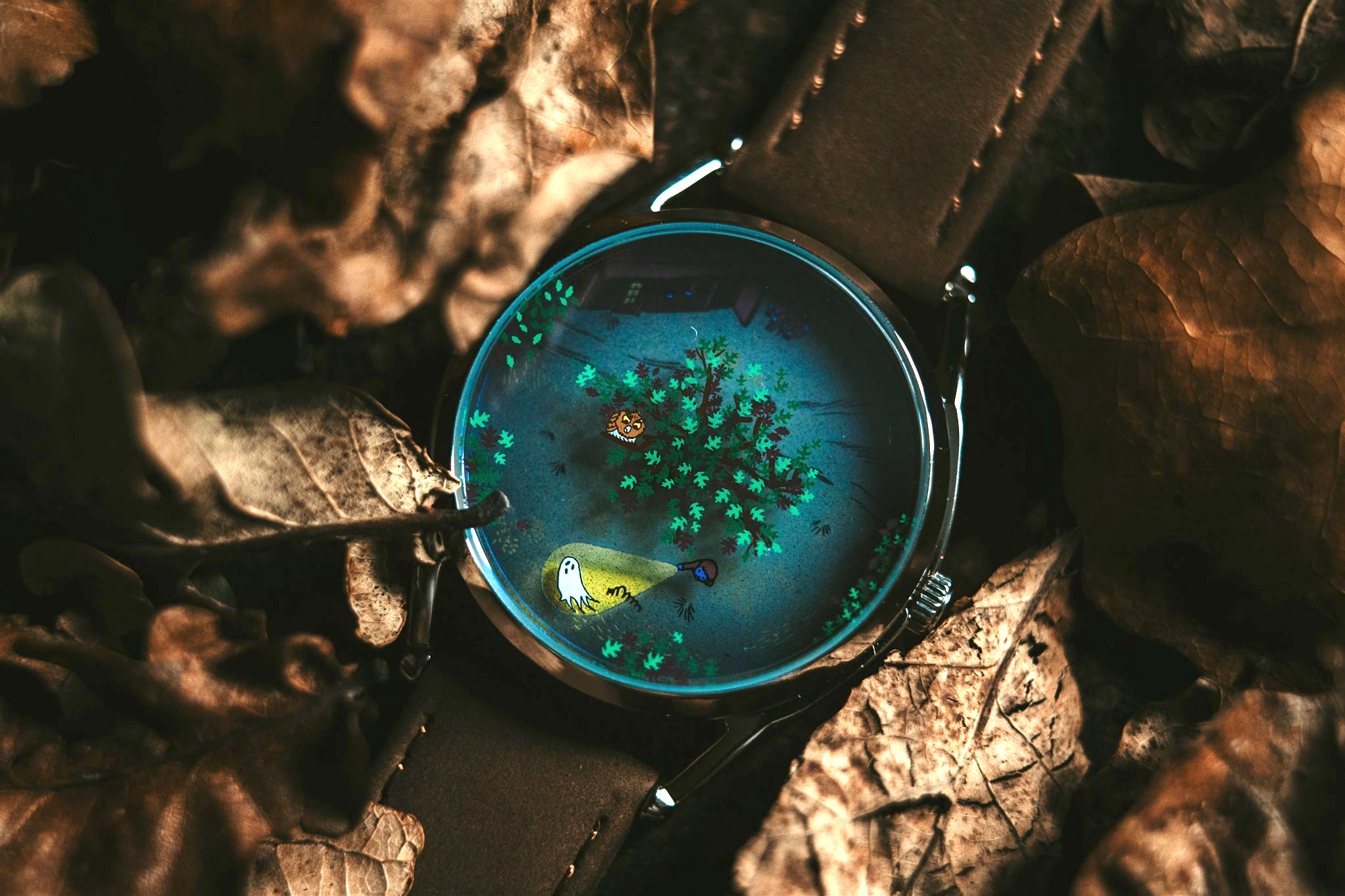Verdict
The HP Omnibook 5 is a capable student laptop with solid power, fantastic battery life and a decent OLED screen. It’s also quite light and portable, and has a pleasant aluminium chassis. You are compromising on ports against key rivals, though.
-
Lightweight and portable -
Decent OLED screen -
Sublime battery life
-
Meagre port selection -
Performance is a little behind rivals
Key Features
-
All day battery life
The Omnibook 5 boasts some of the best battery life we’ve tested, with several working days possible on a charge. -
Snapdragon X processor
It also has a decent eight-core processor inside for decent performance for productivity and some more intense use. -
1920×1200 OLED screen
The Omnibook 5 has a dazzling OLED panel with strong contrast, deep blacks and decent detail.
Introduction
The HP Omnibook 5 is the brand’s latest attempt at a mid-range laptop designed squarely for students.
On paper, it’s got all the makings of a good laptop for those off to college or university, with a decent 8-core Snapdragon X processor, a 14-inch 1920×1200 OLED panel, plus some fantastic battery life to keep you going at lectures all day.
The problem HP is going to face with this is that the last year or so has already thrown up some serious contenders for student laptops, including the Apple MacBook Air M4, Asus Zenbook A14 and the Dell Inspiron 14 Plus 7441 (2024)
At £849.99, it’s in the right ballpark for price to performance – I’ve been testing it to see if it’s all cracked up to be.
Design and Keyboard
- Pleasant look and feel
- Meagre port selection
- Softer keyboard and trackpad
The Omnibook 5 has a distinctly mid-range feel and look to it. I know that sounds like I’m stating the obvious, but it is true. There aren’t many frills, but what’s here is perfectly respectable and will easily do for the most part.
We’ve got a smooth aluminum finish across the body to make for a decently lightweight and durable laptop, while its 14-inch form factor keeps it compact enough to be portable. A weight of 1.29kg isn’t as light as the Zenbook A14, but it isn’t exactly like lugging around the Alienware 18 Area-51 – it’s fine.

At just 12.6mm thick, the Omnibook 5 is a slender customer, although falls into the same trap as its more expensive siblings by skimping out on the ports. The left side houses a pair of USB-C ports with support for power delivery and DP powers, one of which is used for charging, while the right has a USB-A with its funny Ethernet-style port cover and a headphone jack.
Opening up the lid reveals a smaller form factor keyboard layout, with arrow keys and a dedicated function row. The keyboard feels tactile and comfortable to use, although has a softer keypress than some other laptops I’ve used. It is backlit to a good degree to make it suitable for after-dark working.


The Omnibook 5’s trackpad is okay, if a tad unremarkable. Size is okay and its tracking is accurate, while its buttons have the same dampened feel as the keyboard.
Display and Sound
- Decent 1920×1200 OLED panel
- Strong colour accuracy
- Middling speakers
More mid-range focused laptops can be quite hit or miss with their displays, with some options dazzling me in recent times, and others falling a tad flat. To its credit. HP has bundled what seems to have the makings of a solid screen for productivity loads with a 14-inch 1920×1200 resolution OLED panel. It is only 60Hz, so it lacks the silky smooth motion you’ll get from higher refresh rate options for added zippiness in use.
Otherwise, my colorimeter testing determined it had the makings of a good OLED screen, with the classic deep and inky blacks plus strong contrast and dynamic range. This was reflected in the respective black level and contrast ratio numbers of 0.01 and 20920:1.


Colour accuracy is a strong point, too, with 100% coverage of both the sRGB and DCI-P3 gamuts. The trickier Adobe RGB space is also near-perfect with 97% coverage, proving the Omnibook 5’s panel is equally adept for productivity or creative workloads.
The 6700K white point is also about where it should be, while this panel’s peak brightness of 286.4 nits is just fine. I’ve seen better pop from competing panels, making them better for working outdoors or handling HDR content if the panel supports it.


As for its speakers, the Omnibook 5’s are reasonable, being downwards-firing units whose sound can be affected by the surface the laptop is placed on. For the most part, they work out okay with good depth to the sound, although their lack of low end can leave them a little thin.
Performance
- Snapdragon X provides decent performance
- 3D power isn’t too enticing
- Reasonable capacity and speed SSD
The Omnibook 5 comes with a Snapdragon X SoC inside, the same 8-core processor you’ll find in key rivals such as the Asus Zenbook A14. The chip was first announced at CES 2025 as the new base model for processors in Arm-based Windows laptops that have previously employed the beefier 10-core X Plus and 12-core X Elite models.
Single core numbers in Geekbench 6 and Cinebench R23 keep up with the beefier Snapdragon chips found in this laptop’s rivals, although as expected, the multi-core results are some 25% lower in Geekbench and 15% lower in Cinebench. It’s not as much of a performance hit as in the tablet-style Asus ProArt PZ13, but it is worth bearing in mind.


In addition, as with other Snapdragon-powered Windows laptops I’ve tested, the Adreno iGPU with this chip isn’t brilliant, with this laptop barely posting a four-figure score in the 3DMark Time Spy test. You’re better off with one of AMD or Intel’s new chips for much better integrated graphics.
With all this in mind, quoting a load of benchmark tests doesn’t tell the full story. For most workloads, such as web browsing, using Google Docs and working with Spotify in the background, in my case, the Omnibook 5 performed admirably, remaining quiet and speedy. It’s only in extreme cases, such as with intensive video or photo editing, where the multicore performance deficit is likely to be an issue. For typical student workloads, you shouldn’t run into any trouble.


The 16GB of RAM gives enough headroom for those tasks, while the 512GB is just okay. Likewise, its measured read and write speeds of 5052.58 MB/s and 4612.78 MB/s aren’t that impressive, but are still brisk enough for fast boot times and access to data.
Software
- Proper Windows 11 installed
- Some pre-installed HPC apps
- Also comes with usual Copilot+ PC features
The Omnibook 5 comes running Windows 11, and with a range of software pre-installed, including McAfee antivirus, as is typical with some of these ultrabooks.
It has a range of HP-specific software, HP’s AI Companion app, which is pinned to the taskbar on initial setup and provides a means of accessing HP’s AI assistant things, such as to write copy in a specific style or to enable features such as noise reduction and auto framing for conferencing.


Elsewhere, this is also a Copilot+ PC and has enough AI power with its Snapdragon X chip to warrant the inclusion of Microsoft’s own tools. Chief among these is the addition of the Copilot assistant which you can ask questions and to undertake tasks, if you so wish.
In addition, there is also generative AI functionality baked into the Photos and Paint apps, if you want it. The most useful set of AI tools with the Omnibook 5, as with other Copilot+ PCs, is the Windows Studio effects for the webcam, which provides a convenient means of auto framing, background blur and even for making sure you maintain eye contact.
Battery Life
- Lasted for 22 hours 23 minutes in the battery test
- Capable of lasting for nearly three working days
HP makes quite a big promise for the battery life of the Omnibook 5, stating that its modest 59Whr cell should last up to 34 hours on a charge. A result like that would easily make this laptop the longest-lasting one I’ve tested.
In dialling the brightness down to the requisite 150 nits and running PC Mark’s video loop test until the laptop turned off, the Omnibook 5 lasted for 22 hours and 23 minutes. While that is some way short of HP’s claims, it’s still a mighty impressive result, being in line with much more expensive laptops such as the Microsoft Surface Laptop 7 and Dell Pro 14 Premium, and easily means you’ll be able to get nearly three working days out of it.
Thanks to its 65W charger, you also won’t be waiting too long for it to recharge, as it took 32 minutes to get back to 50 percent, while a full charge took 86 minutes.
Should you buy it?
You want class-leading endurance
The Omnibook 5 is one of the best laptops I’ve tested for its battery life, and if getting multiple working days on a charge is integral, this is a brilliant choice.
The Omnibook 5’s dual USB-C and single USB-A port arrangement isn’t going to cut it if you want more ports, which the competition can provide in droves.
Final Thoughts
The HP Omnibook 5 is a capable student laptop with solid power, fantastic battery life and a decent OLED screen. It’s also quite light and portable, and has a pleasant aluminium chassis. You are compromising on ports against key rivals, though.
The Asus Zenbook A14 is a little richer in terms of ports, while also being even lighter and more stylish in its chassis, although battery life isn’t as strong. Likewise, the Dell Inspiron 14 Plus 7441 (2024) trades an OLED screen for more potency and a better port selection against HP’s choice.
With this in mind, the Omnibook 5 is still a great choice if you’re prioritising battery life above all. For more options, check out our list of the best laptops we’ve tested.
How We Test
This Acer laptop has been put through a series of uniform checks designed to gauge key factors, including build quality, performance, screen quality and battery life.
These include formal synthetic benchmarks and scripted tests, plus a series of real-world checks, such as how well it runs popular apps.
FAQs
The HP Omnibook 5 has two USB-C ports, plus a USB-A and a 3.5mm headphone jack.
Test Data
Full Specs
| HP Omnibook 5 Review | |
|---|---|
| UK RRP | £849.99 |
| CPU | Snapdragon X |
| Manufacturer | HP |
| Screen Size | 14 inches |
| Storage Capacity | 512GB |
| Front Camera | 1080p webcam |
| Battery | 59 Whr |
| Battery Hours | 22 23 |
| Size (Dimensions) | 312.1 x 217.5 x 12.6 MM |
| Weight | 1.29 KG |
| Operating System | Windows 11 |
| Release Date | 2025 |
| First Reviewed Date | 27/08/2025 |
| Resolution | 1920 x 1200 |
| Refresh Rate | 60 Hz |
| Ports | 2x USB-C, 1x USB-A, 1x 3.5mm |
| GPU | Qualcomm Adreno |
| RAM | 16GB |
| Connectivity | Wifi 6E, Bluetooth 5.3 |
| Display Technology | OLED |
| Touch Screen | No |
| Convertible? | No |











